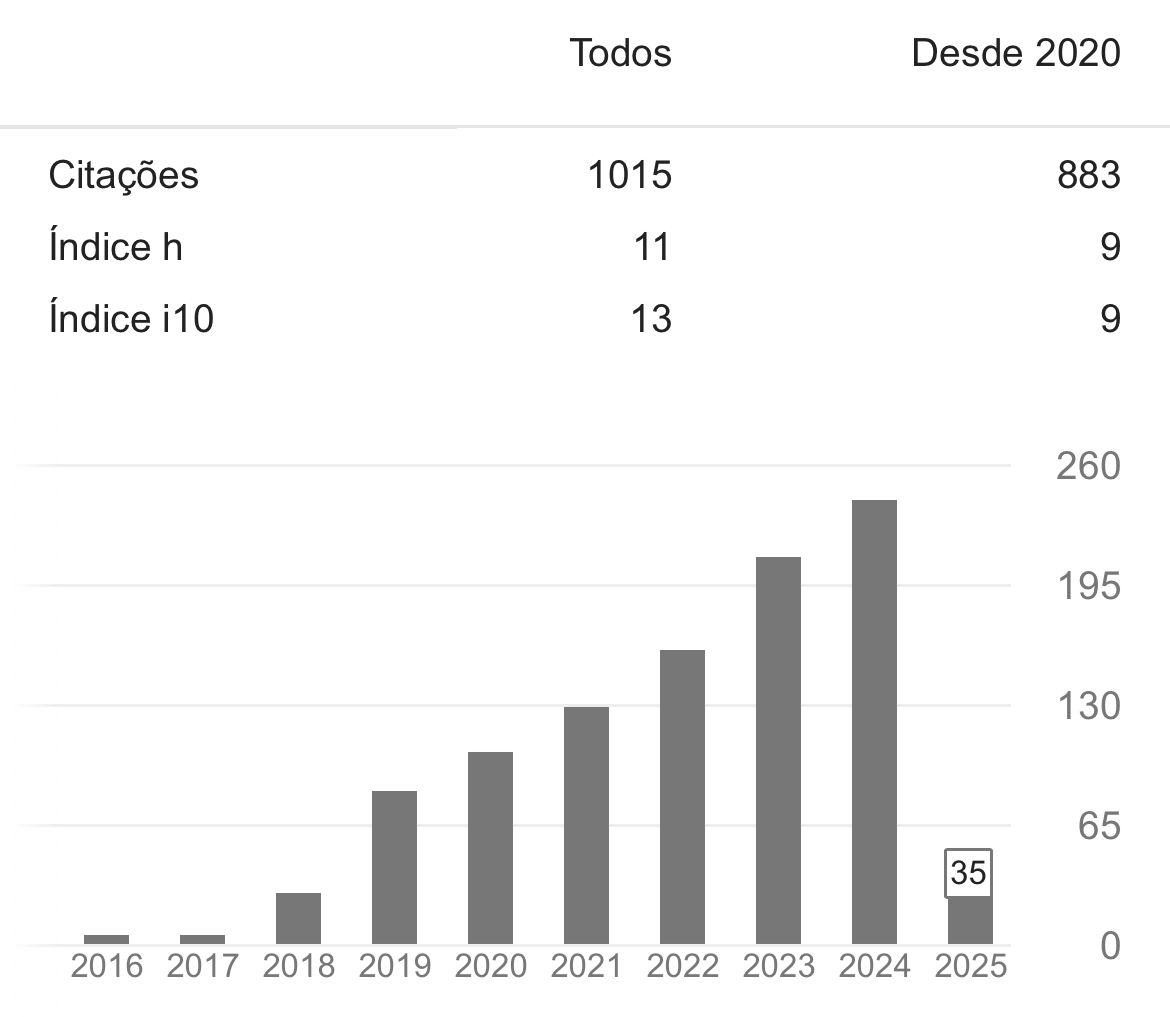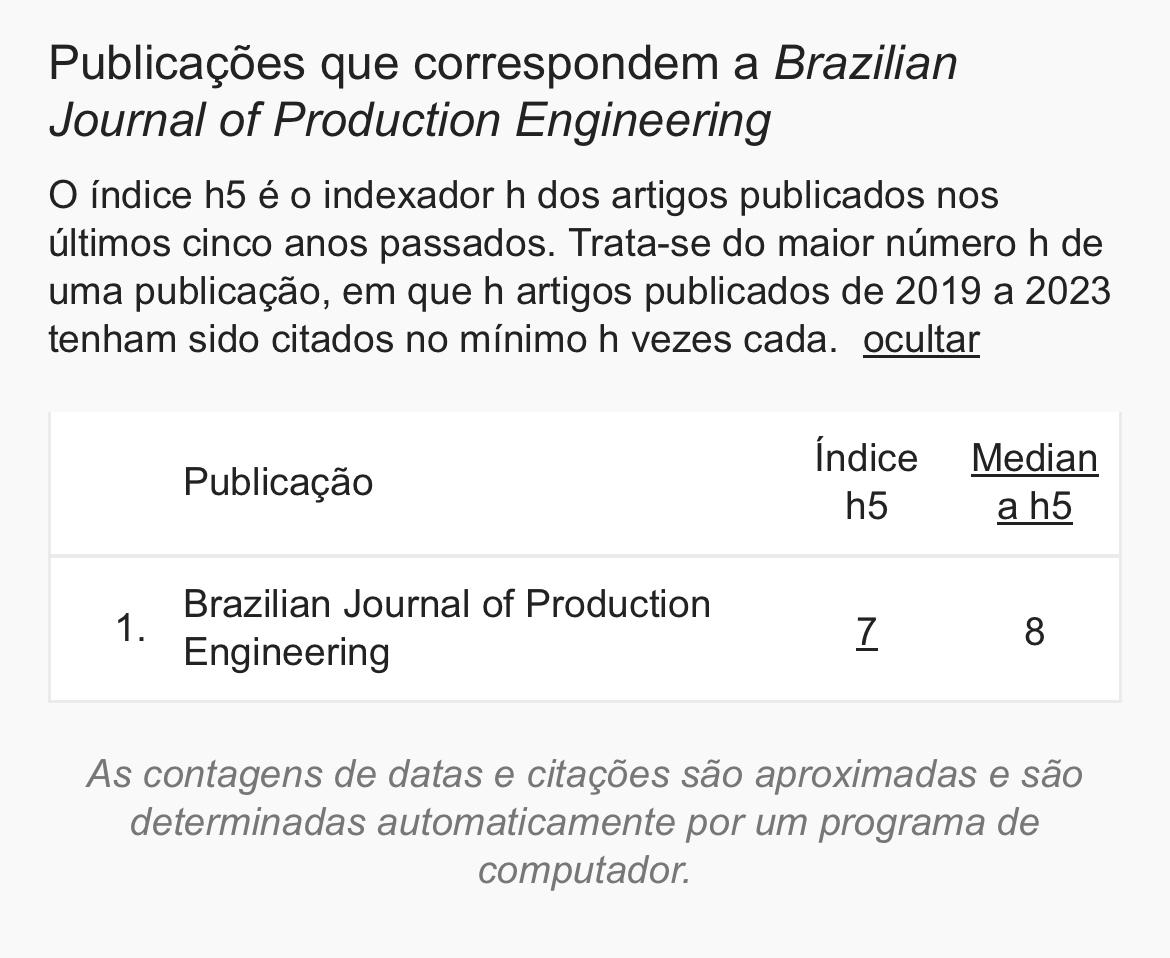Characterization of tailings from the processing of ornamental rocks
Caracterização de relevos provenientes do beneficiamento de rochas ornamentais.
DOI:
https://doi.org/10.47456/bjpe.v7i1.34210Keywords:
Industrial waste, Characterization, Sustainability, Minerals treatment, ReuseAbstract
The processing of ornamental rocks promotes the constant generation of abrasive sludge, which, in turn, causes different types of contamination. The possibility of reusing residues generated in industrial processes has economic advantages, therefore, it is necessary to know the physical, chemical and mineral properties of these residues. Thus, the objective of this research was to evaluate the possibilities of application of abrasive mud, generated in industries located in the city of Campina Grande - PB, based on its main characteristics. The methodology consisted of the following analyzes: X-ray fluorescence, X-ray diffraction, scanning electron microscopy, particle size analysis and physical-chemical analysis. Chemical analyzes revealed that the residues have interesting characteristics, mainly for use in civil construction. The mineralogical analysis indicated that the sample has an essential mineral composition for the cosmetic industry, which was confirmed by the detected elements present. The study of the particle size characterized the sample as material of irregular shape and with good micronization, confirming the potential for reuse as a cosmetic, while the morphological analysis showed the presence of iron as a limiting factor for certain applications. Physico-chemical tests confirmed the characteristics common to abrasive sludge. The characterized samples showed, in general, satisfactory properties with regard to its use as an alternative material in different segments.
Downloads
References
ABNT NBR 10006 (2004). Procedimento para obtenção de extrato solubilizado de resíduos sólidos. Associação Brasileira de Normas Técnicas.
ABNT NBR 10007 (2004). Amostragem de resíduos sólidos. Associação Brasileira de Normas Técnicas.
Abreu, U.A., Ruiz, M.S., Caruso, L.G. (1990). Dimensioned and equipped rocks. In Mineral producer market in the state of São Paulo. Instituto de Pesquisas Tecnológicas, Brazil, p. 137-151.
Al-Zboon, K., & Al-Zou’by, J. (2015). Recycling of stone cutting slurry in concrete mixes. Journal of Material Cycles and Waste Management. https://doi.org/10.1007/s10163-014-0246-x
Allam, M. E., Bakhoum, E. S., & Garas, G. L. (2014). Re-use of granite sludge in producing green concrete. ARPN Journal of Engineering and Applied Sciences.
Albarrán-Liso, C., Jordán-Vidal, M. M., Sanfeliu-Montolio, T., & Liso-Rubio, M. J. (2006). Alteration, evaluation and use of extremaduran granite residues. Environmental Geology. https://doi.org/10.1007/s00254-005-0148-2
Alves, J. O., Espinosa, D. C. R., & Tenório, J. A. S. (2009). Recycling of steelmaking slag aiming at the production of thermoacoustic insulation. TMS Annual Meeting.
Anthony, J. W., Bideaux, R. A., Bladh, K. W., & Nichols., M. C. (2003). Handbook of Mineralogy. In Mineralogical Society of America.
Carretero, M. I., & Pozo, M. (2010). Clay and non-clay minerals in the pharmaceutical and cosmetic industries Part II. Active ingredients. Applied Clay Science. https://doi.org/10.1016/j.clay.2009.10.016
Carty, W. M., & Senapati, U. (1998). Porcelain - Raw materials, processing, phase evolution, and mechanical behavior. Journal of the American Ceramic Society. https://doi.org/10.1111/j.1151-2916.1998.tb02290.x
CPRM – Serviço Geológico do Brasil (2002). Geologia e Recursos Minerais do Estado da Paraíba. Companhia de Pesquisa de Recursos Minerais.
Costa Borges, A., Gadioli, M. C. B., Pinto, L. A. B., & de Oliveira, J. R. (2012). Mixture of Granite Waste and LD Steel Slag for Use in Cement Production. Materials Science Forum, 727–728, 1535–1540. https://doi.org/10.4028/www.scientific.net/MSF.727-728.1535
Da Silva, D. F. (2014). Lixo Zero – Gestão de resíduos sólidos para uma sociedade mais próspera. Desenvolvimento e Meio Ambiente. https://doi.org/10.5380/dma.v31i0.34550
Dário, G. M. I., Da Silva, G. G., Gonçalves, D. L., Silveira, P., Junior, A. T., Angioletto, E., & Bernardin, A. M. (2014). Evaluation of the healing activity of therapeutic clay in rat skin wounds. Materials Science and Engineering C. https://doi.org/10.1016/j.msec.2014.06.024
Ding, Y., Jalali, S., & Niederegger, C. (2010). Recycling of metamorphic rock waste in ecological cement. Proceedings of Institution of Civil Engineers: Construction Materials. https://doi.org/10.1680/coma.800017
Filho, C., Rodrigues, E., & Artur, A. (2004). PANORAMA TÉCNICO - ECONÔMICO DO SETOR DE ROCHAS ORNAMENTAIS NO BRASIL. Geociências.
Filho, H. F. M., Polivanov, H., & Mothé, C. G. (2005). Reciclagem dos resíduos sólidos de rochas ornamentais: the case of waste of the dimension stones. Anuário Do Instituto de Geociências.
Lira, B. B., Rodrigues, G., Cavalcanti, L. L., Madeira, V. S., Santos, L. A. dos, & Comboim, J. E. de L. (2016). ESTUDO DOS PEGMATITOS DA PROVÍNCIA DA BORBOREMA PARAÍBA: MINERAIS E MINÉRIOS DE INTERESSE TECNOLÓGICO. Tecnologia Em Metalurgia Materiais e Mineração. https://doi.org/10.4322/2176-1523.0956
López-Galindo, A., & Viseras, C. (2004). Pharmaceutical and cosmetic applications of clays. In Interface Science and Technology. https://doi.org/10.1016/S1573-4285(04)80044-9
Maclennan, M. L. F., Semensato, B. I., Oliva, F. L., & Almeida, M. I. R. (2014). Fatores Condicionantes da Competitividade Exportadora do Cluster de Rochas Ornamentais do Espírito Santo. Revista Organizações Em Contexto. https://doi.org/10.15603/1982-8756/roc.v10n19p103-129
Manhães, J. P. V. T., Moreira, J. M. S., & Holanda, J. N. F. (2009). Variação microestrutural de cerâmica vermelha incorporada com resíduo de rocha ornamental. Cerâmica. https://doi.org/10.1590/s0366-69132009000400006
Manhães, J. P. V. T., & De Holanda, J. N. F. (2008). Characterization and classification of granitic rock powder solid waste produced by ornamental rock industry. Quimica Nova. https://doi.org/10.1590/S0100-40422008000600005
Marabini, A. M., Plescia, P., Maccari, D., Burragato, F., & Pelino, M. (1998). New materials from industrial and mining wastes: Glass-ceramics and glass-and rock-wool fibre. International Journal of Mineral Processing. https://doi.org/10.1016/s0301-7516(97)00062-8
Menezes, R. R., Ferreira, H. S., Neves, G. de A., & Ferreira, H. C. (2002). Uso de rejeitos de granitos como matérias-primas cerâmicas. Cerâmica. https://doi.org/10.1590/s0366-69132002000200008
Oliveira, C. N., Queiróz, J. P. C., Ribeiro, R. C. C. (2009). Aplicação de Resíduos Oriundos do Corte de Rochas Ornamentais na Produção de Cosméticos. In XVI Jornada de Iniciação Científica do Cetem.
Pizetta, P. P., & Gadioli, M. C. B. (2014). Incorporação de resíduo de rocha ornamental proveniente de tear multifio em massa cerâmica. In Jornada de Iniciação Científica.
Rego, G., Martínez, C., Quero, A., Blanco, T. P., & Borque, J. M. F. (2001). The effects of dust inhalation on slate industry workers. Medicina Clinica. https://doi.org/10.1016/S0025-7753(01)71802-7
Ribeiro, S. V, & Holanda, J. N. F. (2014). Soil-Cement Bricks Incorporated with Granite Cutting Sludge. International Journal of Engineering Science and Innovative Technology (IJESIT).
Savazzini dos Reis, A., & Engel de Alvarez, C. (2006). A Sustentabilidade e o Resíduo Gerado No Beneficiamento Das Rochas Ornamentais. IV Encontro Nacional e II Encontro Latino-Americano Sobre Edificações e Comunidades Sustentávies.
Silva, F. A. N. G., Luz, A. B., Sampaio, J. A., Bertolino, L. C., Scorzelli, R. B., Duttine, M., & da Silva, F. T. (2009). Technological characterization of kaolin: Study of the case of the Borborema-Seridó region (Brazil). Applied Clay Science. https://doi.org/10.1016/j.clay.2009.01.015
Silveira, L. L. L., Wilson, F., Vidal, H., & Sênior, T. (2014). TECNOLOGIA DE ROCHAS ORNAMENTAIS: PESQUISA, LAVRA E BENEFICIAMENTO. In F. W. H. Vidal, N. F. Castro, & H. C. . Azevedo (Eds.), TECNOLOGIA DE ROCHAS ORNAMENTAIS: PESQUISA, LAVRA E BENEFICIAMENTO. Rio de Janeiro: CETEM.
Simsek, C., Karaca, Z., Gemici, U., & Gunduz, O. (2005). The assessment of the impacts of a marble waste site on water and sediment quality in a river system. Fresenius Environmental Bulletin.
Souza, A. J., Pinheiro, B. C. A., & Holanda, J. N. F. (2010). Recycling of gneiss rock waste in the manufacture of vitrified floor tiles. Journal of Environmental Management. https://doi.org/10.1016/j.jenvman.2009.09.032
Torres, P., Fernandes, H. R., Agathopoulos, S., Tulyaganov, D. U., & Ferreira, J. M. F. (2004). Incorporation of granite cutting sludge in industrial porcelain tile formulations. Journal of the European Ceramic Society. https://doi.org/10.1016/j.jeurceramsoc.2003.10.039
Torres, P., Fernandes, H. R., Olhero, S., & Ferreira, J. M. F. (2009). Incorporation of wastes from granite rock cutting and polishing industries to produce roof tiles. Journal of the European Ceramic Society. https://doi.org/10.1016/j.jeurceramsoc.2008.05.045
Ueda, M., Murase, F., Takahashi, F., & Matsumoto, T. (1999). An optical system for measuring the eccentricity of glass wool pipe - For industrial use. Optics and Lasers in Engineering. https://doi.org/10.1016/S0143-8166(99)00030-5
Vieira, C. M. F., & Monteiro, S. N. (2009). Incorporation of solid wastes in red ceramics - An updated review. Revista Materia. https://doi.org/10.1590/S1517-70762009000300002
Zanatta, P. (2017). Gestão Ambiental E O Desenvolvimento Sustentável. Revista Gestão & Sustentabilidade Ambiental, 6(3), 296. https://doi.org/10.19177/rgsa.v6e32017296-312
Zichella, L., Dino, G. A., Bellopede, R., Marini, P., Padoan, E., & Passarella, I. (2020). Environmental impacts, management and potential recovery of residual sludge from the stone industry: The piedmont case. Resources Policy. https://doi.org/10.1016/j.resourpol.2019.101562
Downloads
Published
How to Cite
Issue
Section
License
Copyright (c) 2021 Brazilian Journal of Production Engineering - BJPE

This work is licensed under a Creative Commons Attribution-NonCommercial-ShareAlike 4.0 International License.

















































































